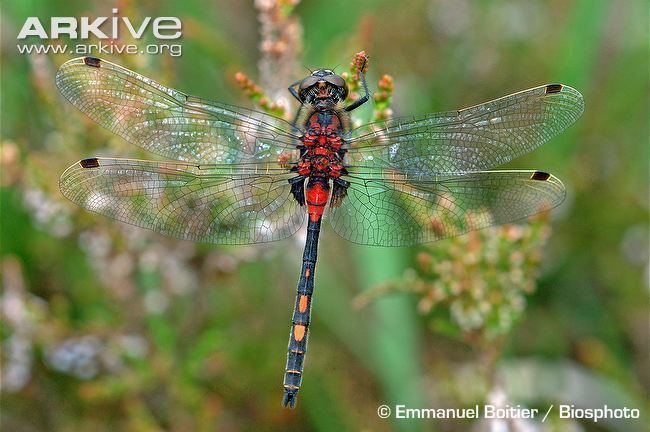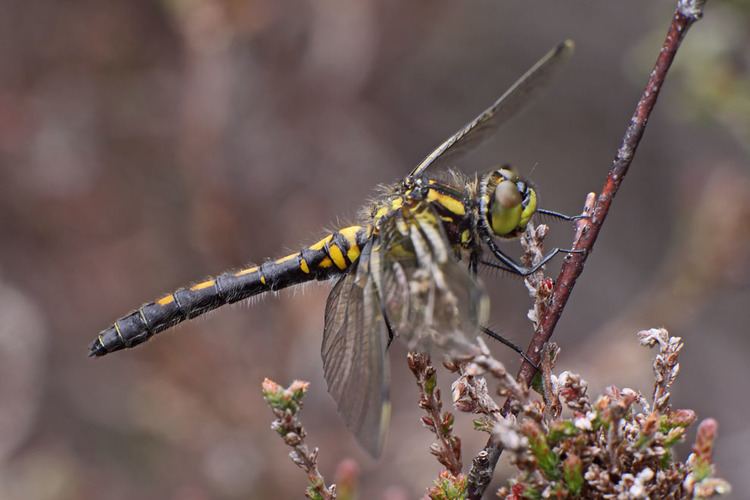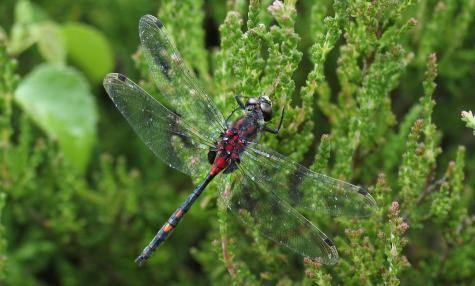Scientific name Leucorrhinia dubia Rank Species | ||
 | ||
Similar Leucorrhinia, Odonate, Leucorrhinia albifrons, Northern white‑faced darter, Downy emerald | ||
White faced darter emerging from nymph
The white-faced darter or small whiteface (Leucorrhinia dubia) is a small dragonfly belonging to the genus Leucorrhinia in the family Libellulidae. Its flight period lasts from May to August. It is found in peat bogs from northern Europe eastwards to Siberia. In southern Europe there are populations in some mountainous areas such as the Alps and Pyrenees. In Great Britain it is rare and local with the largest population in the Scottish Highlands.
Contents
- White faced darter emerging from nymph
- White faced darter mating venwitsnuitlibel parend leucorrhinia dubia
- Description
- Reproduction
- Conservation
- References

White faced darter mating venwitsnuitlibel parend leucorrhinia dubia
Description

The abdomen is 21–27 mm long and the hindwing is 23–28 mm long. Mature males have a black body with red and orange markings on the abdomen and thorax which become darker with age. Young males and females have pale yellow markings. All have a conspicuous white frons at the front of the head. The wings have a brown patch at the base.
Reproduction

It breeds in acidic pools with extensive growth of Sphagnum moss. The male holds a small territory near water. Copulation with the female often begins over water before they settle on the ground or in low vegetation for about 30 minutes. The female drops the eggs amongst submerged moss or the stems of cottongrass. The larvae live amongst the Sphagnum; they feed mostly at night but are also active during the day. They take one to three years to reach adulthood with two being most common. They emerge between May and early July in Great Britain; the exact timing depends on the latitude and weather. They climb out of the water up a plant stem before flying away from the pool. Males become mature 4–12 days after emergence and females a few days later.
Conservation

It is vulnerable to alteration and destruction of its habitat. In the United Kingdom, 95% of lowland peat bogs have been destroyed limiting the available habitat for the white-faced darter. It is protected there by the Wildlife and Countryside Act 1981 and is covered by Biodiversity Action Plans in some counties. Cumbria has set an objective of reintroducing the species at previously occupied sites, and in 2010 it was reintroduced to Witherslack Mosses.

